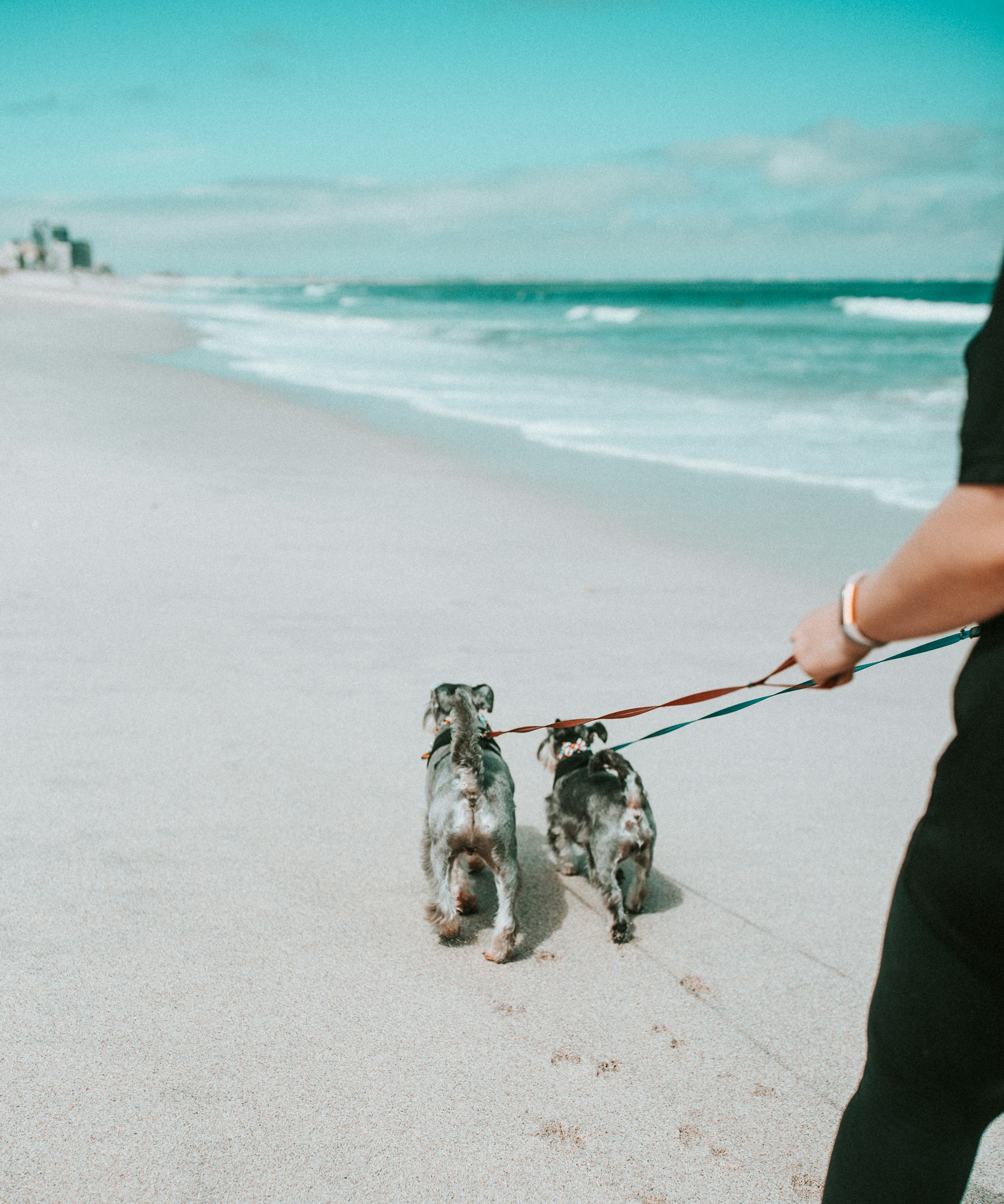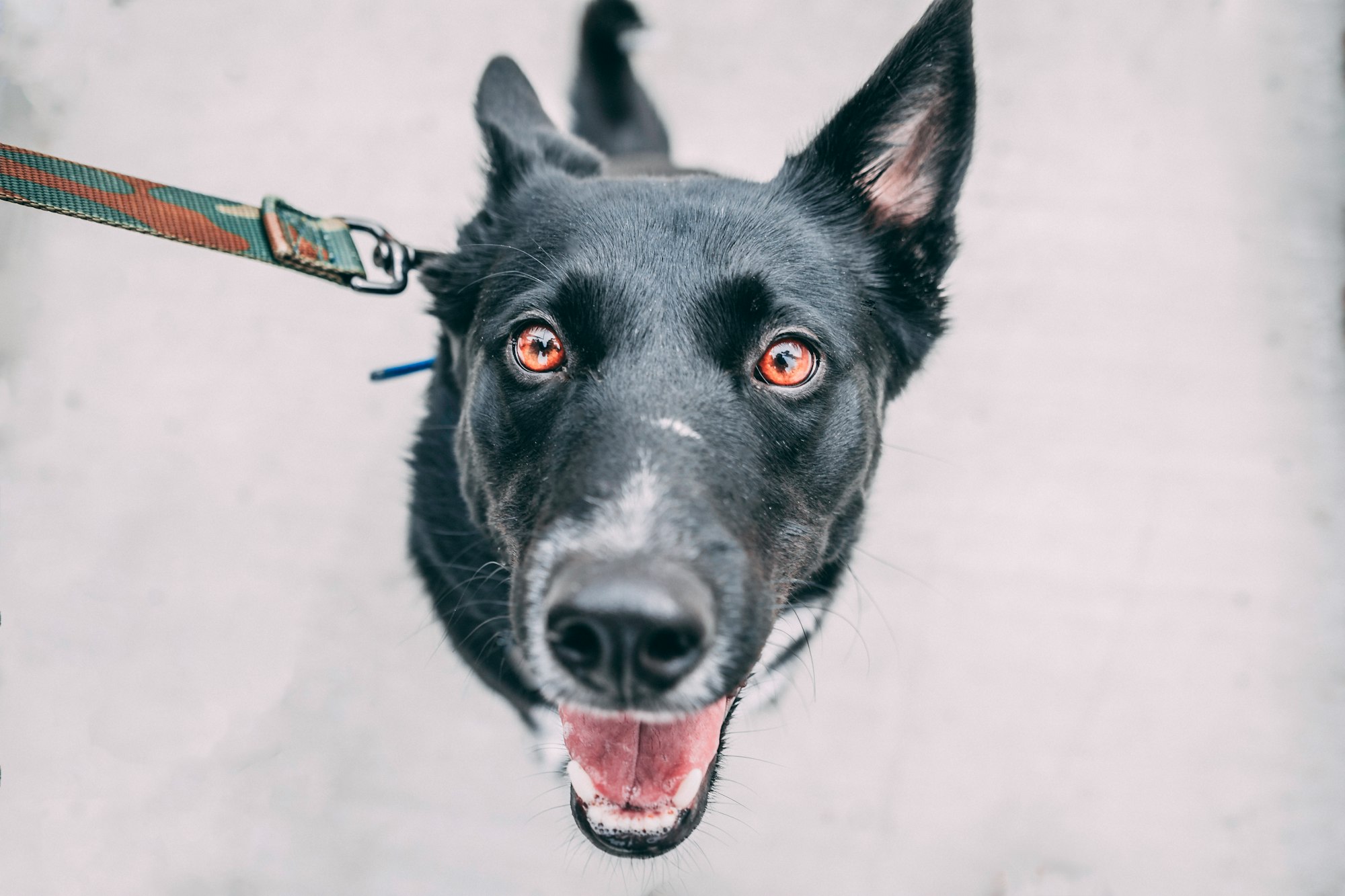No matter how well-behaved your dog is, you never know how other dogs are going to behave. Dog owners know that nothing can induce anxiety quite like a loose approaching dog bounding toward you or your dog while you walk your dog.
This is especially true if you have a breed or personality type that doesn't enjoy the company of other dogs. And if your pet's the kind of pup who gets anxious over these encounters, it can even lead to them snapping back instinctively and cause a dog fight or an attack, even if the other dog is friendly.
As a dog owner, you need to be prepared for this situation and train yourself on what to do. Dogs can become unleashed in many ways or they can simply exit an owner's backyard and become a loose dog. Many dog owners do not even know their dog is loose and has run away.
Certain dog owners will not follow leash laws and allow their dog to walk without a leash. They believe their dog is trained and does not need to be leashed. This can cause issues if something scares the dog or even distracts the dog. This is why it is so important when walking your dog that you keep your dog on a leash.

So, what do you do when an off-leash dog approaches during a walk?
Dogs might approach for a number of reasons. Whether you're approached by a stray dog or an owner with a loose pet that has pulled a Houdini on their leash, you should always try to avoid other, uncontrolled dogs.
Sometimes, though, it's unavoidable. Below, we've set out some times that should help you handle this kind of scenario with confidence to keep your dog safe. One of the most important parts is keeping yourself calm and your body language calm as well.
1. Understand the dog's body language
Reading another dog's body language isn't as hard as it sounds, and understanding their intentions can help to offset the sudden anxiety over what they may do. While eyeing the approaching dog, remember to stay calm and be aware. If you do not stay calm, your dog can feed off your behavior and start to sense the stress.
If the approaching unleashed dog is a friendly one, you'll surely recognize the signs from your own pup. They'll be very bouncy, loose, and relaxed. The approaching dog's ears will be down, they may be wagging their tongue, and likely panting. Of course, their tail behind them might be rocking bath and forth too.
Still, be wary of any approaching dog. Friendly calm dogs are often very excitable, particularly when meeting another canine. Their excitement can overwhelm more anxious dogs, and if your dog is anxious, they could react badly as we noted above. If that happens, the other dog's demeanor could change quickly.
However, not all dogs are friendly, and an aggressive canine could cause bigger issues like a dog fight or an attack. If you note the approaching dog's ears are extended, a tight tail way, a closed mouth, and who is staring, this could indicate aggression.
In either of these scenarios, your goal is to block the unknown dog from coming towards your pup to avoid a dog fight. There are more tips below that will help you to manage the encounter now that you know what a happy and excitable or aggressive dog might look like.
2. Remove your dog from the situation
Assuming you've noticed the dog approaching from a distance, sometimes it's enough to simply walk and get away. Don't run, but remove your pup from the situation calmly and without making a fuss. If you appear agitated, your dog will likely pick up on your sudden change and could start feeling anxious too. Do not run away but slowly go home and keep your self calm and your dog safe.
3. Use treats and commands to distract the offending dog
If the dog is still approaching, and you haven't been able to put distance between you by walking away, you can try to use a distraction to have them move away.
First, try telling them to "Sit." If they're a trained dog, they may listen to your command, though don't expect too much. If they do, you can toss a handful of treats toward them, keeping them busy while you revert back to Step 2 and take your dog and begin walking away. The loose dog will hopefully be too busy enjoying the treats on the ground and lose interest.
Just be wary that this isn't the ideal outcome. By offering food, you can teach the intruding dog that you're a source of food, increasing the chance that they follow you and your pup.
4. Try the body blocking technique
Assuming that you haven't been able to walk away, and treats don't work or you don't have them handy, you can try using a body block. Here, you're literally blocking the intruding dog from your own pet using your body to keep your dog safe.
Stand between them and put your hand out and issue a strong command, such as a simple "No!" Use your body as a physical barrier, and take your dog and move your dog behind you. This keeps the unleashed dog away from your dog and sets you as the physical barrier.
Stay between the two dogs while you lead your leashed dog away, though be wary of any aggression from the other canine. It's not worth risking your own safety if you make yourself appear as a threat in front of the loose animal.
5. Don't pick your dog up to remove them from the situation
Let's say your dog is a Pomeranian, Poodle or any small dog breed. They're so small, that you might be tempted to simply pick up your dog and remove them from harm's way. Experts agree that this is a bad idea; you could risk triggering the other dog's prey instinct, causing them to attack you both in much the same way they'd chase a squirrel up a tree trunk. The unleashed dog may stand on their back legs and try to attack you while also trying to get your dog.
If you must pick up your dog in a last resort effort, try to turn around so that the offending dog doesn't see it happening. This way, you could stand a higher chance of avoiding a negative aggressive reaction.
Other last resort options
If you live in an area where there are dogs or even wildlife that may approach you, it is best to think ahead, be aware and be prepared. There are some options of things that you can carry to use as a weapon against any aggressive animal or pet that approaches you.
The most common weapon you can use is pepper spray. It works against most animals and will stop many from approaching any closer. You do need to be prepared when using pepper spray because it can also get on you and your dog. If possible, try and get your dog behind you and spray down wind and away from you.
You can also use compressed air. This does not contain any harmful components. It just acts as a way to scare an approaching dog with a strong burst of air. It will hopefully distract the dog or pet long enough so you pick up your dog and move away safely.
Another option is that you can carry some type of walking stick or even an umbrella to act as a weapon. You can use the umbrella to strike the ground, or even use it as a physical barrier between you and the approaching dog. The noise will hopefully startle the approaching dog and protect you and your dog to allow you to get away.
While of course these are last resort options, and hopefully you never have to use them, it is important to be prepared before you walk your dog. Your job as a pet owner is to keep your dog or pet safe, and to protect them if possible.
How to Introduce Your Dog to Another Dog

The tips above are focused on protecting your dog from off-leash dogs while on a walk. But perhaps you want to introduce your pet to another pup while walking your dog. Below, we've included some advice on how to do that safely.
1. Adjust your dog to loose-lead walking
If you've trained your dog to walk without pulling, then you can hold your dog's leash loosely at your side. This gives you greater control over your dog's direction and general movements. It's important to get your pup used to walking on a loose leash, as it'll make things easier on you when introducing your dog to a new friend.
Using high value treats when training your dog can help you gain control of your dog. Most dogs respond really well to training with treats and are food motivated. If your dog begins to lose interest in the treats, you can try and find another treat brand to increase their interest again.
Most trainers like to use hot dogs, chicken or dried beef liver as most dogs really enjoy those types of high value treats. Training is one of the best tools to help with control that an owner can have when walking their dog.
If your dog is leashed, it will be easier to avoid a dog fight and have your dog away from any aggressive approaching dog. You obviously want to avoid a dog fight at all costs and protect your dog and move away.
2. Consult other pet owners on their preferences
Before allowing your dog to mingle with others, you should always check with the owners first. Remember the tips above; some people may have anxious dogs or prefer that unknown dogs don't approach. The risk of the unknown doing being aggressive is often too much of a risk for any dog owner to test.
3. Time your dog's interactions
You're in control over when your dog's allowed to meet other furry friends. If you've given the go-ahead, make sure that you time these interactions. Many experts suggest allowing for the "three second rule," calling your dog to walk away after a brief interaction to avoid any escalation of excitement or aggression with another dog. You can also offer praise and treats when they successfully walk away on your command.
4. Watch out for negative body language
Of course, throughout the encounters with other dogs, however brief, you should watch out for any signs of annoyance or aggression and remove them from the situation. If they're generally whining or pulling to get to other dogs while on the walk, they may need more training on leash-walking techniques or listening to commands.
What to Do if Your Dog is Attacked
While we hate to imagine a scenario where your dog is attacked by an aggressive dog, it's important to know how to protect yourself and your pup.
A leading UK animal charity, PDSA recommends several key steps if you should find yourself in this scenario:
Don't panic or show anxiety, which could worsen the situation
Don't put yourself between your dog and the aggressor
Try to distract the other dog with a loud, non-verbal noise, like a clap
Call your dog away if possible
Of course, you should also gather details and report the incident, as well as taking your pup to the vet if they sustained any injuries.
With all of the above in mind, hopefully you'll be able to enjoy walks with confidence, knowing exactly how to handle off-leash dogs in all potential scenarios.

For more helpful articles about pet-parenting tips, check out the Off Leash blog at TryFi.com.
Want to know more about TryFi.com? The Fi Dog Collar is a GPS tracking collar that not only keeps track of your dog’s location, activity levels, and sleep patterns, but it also alerts you if your dog escapes your backyard. This is the fastest way to find your dog after an escape. Try the Fi Dog Collar today!






